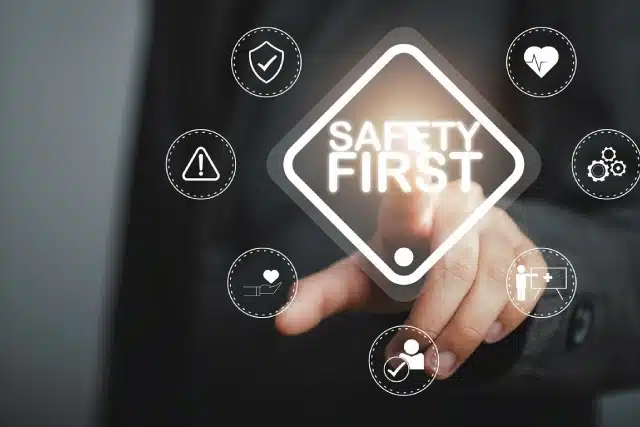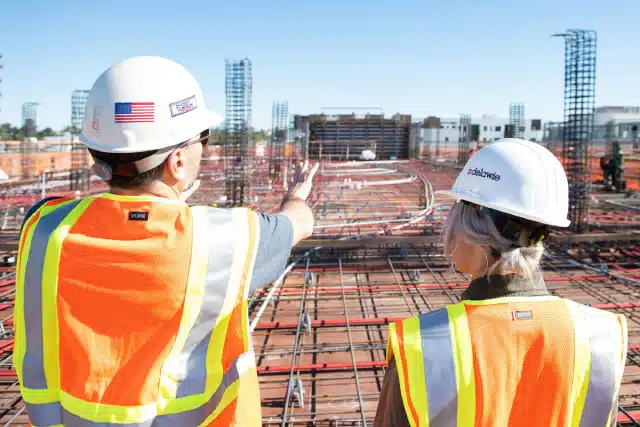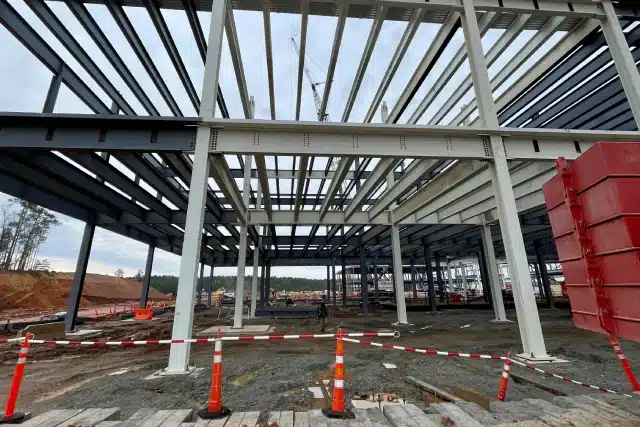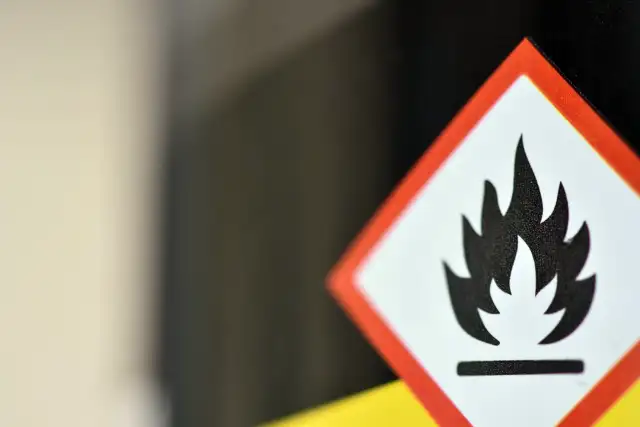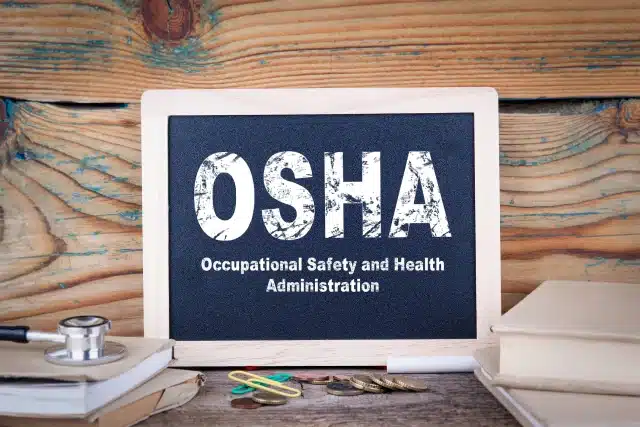Summer brings long daylight hours and ideal conditions for construction projects, but it also introduces a dangerous environmental hazard for workers: heat stress. Construction sites, with their intense physical demands and frequent exposure to direct sunlight, pose a heightened risk to workers for heat-related illnesses—these range from minor heat rashes to life-threatening conditions like heat stroke. As temperatures climb, so does the need for proactive safety training. Experts predict an especially hot and humid summer, making it critical to revisit heat safety best practices and invest in proper construction safety training.
Navigating the Dangers of Silica Dust Exposure in Workplace
In countless industries — from construction and mining to manufacturing and oil and gas — workers face hidden dangers that often go unnoticed until it’s too late. One such hazard is silica dust, a fine particulate matter that, when inhaled, can cause severe and sometimes fatal health conditions. Navigating the dangers of silica dust exposure is crucial to maintaining a safe and healthy work environment. Understanding the risks, implementing protective measures, and incorporating comprehensive safety training can dramatically reduce the threat.
Ensuring Safety for New, Young Construction Workers
Construction sites are fast-paced, high-risk environments where safety must be prioritized. While all workers face potential hazards, new and young employees are especially at risk due to their limited experience and unfamiliarity with established safety protocols. Protecting these workers requires a proactive, comprehensive approach emphasizing thorough training, strong mentorship, clear communication, and a deeply rooted safety culture.
The Case for Hiring a Construction Site Safety Manager
Managing an industrial construction project has many challenges that demand careful attention and coordination. One of the primary obstacles is effectively managing a diverse group, including engineers, architects, contractors, and suppliers, each with their own needs, timelines, and expectations. On top of this, complying with safety regulations and environmental standards adds a further layer of complexity. The scale of these projects requires meticulous logistical planning, from sourcing materials to coordinating transportation and securing necessary permits. Unforeseen delays—whether due to weather, unexpected site conditions, or regulatory issues—can also derail schedules and increase costs. In the midst of all these moving parts, maintaining clear communication and strong problem-solving skills is crucial to ensuring the project runs smoothly. Above all, safeguarding the workforce is paramount. As organizations strive to create a safe working environment and meet rigorous safety standards, many are left asking: Is it time to hire a site safety manager?
Enhancing Construction Site Safety with JHAs
Construction sites are fast-paced, ever-changing environments where multiple tasks occur simultaneously, often involving heavy machinery, complex processes, and large teams. In such high-risk settings, safety must be a top priority. One of the most effective ways to identify and mitigate potential hazards is through Job Hazard Analysis (JHA). This proactive approach requires supervisors and managers to evaluate each task systematically, anticipate potential risks, and implement preventive measures. When integrated into a comprehensive safety program, JHAs help create a safer work environment by addressing hazards before they lead to accidents or injuries.
Navigating OSHA Citations: Proactive Steps to Take
Navigating OSHA citations can be a complex and critical process for employers. When OSHA issues a citation, it must be in writing, consist of allegations describing the nature of the violation, and include a reference to the Act, standard, rule, or order alleged to have been violated. Upon receiving an OSHA citation, prompt action becomes imperative. You have a right to defend against the allegations, and proactive measures are paramount because OSHA citations can substantially affect your business.
Chemical Safety in the Workplace: Protecting Workers and Managing Hazards
Chemicals are essential in various industries, from manufacturing to healthcare and construction. While their applications are vast and invaluable, improper handling and storage can lead to serious workplace hazards, including injuries, illnesses, and even fatalities. Ensuring chemical safety is not just a regulatory obligation but a fundamental aspect of fostering a safe and productive work environment.
The Essential Role of Situational Awareness in Workplace Safety
Safety on a job site is everyone’s problem, and preventing workplace accidents is a team effort. There are ripple effects when an incident or accident occurs; there are consequences for your company, clients, and other employees on the job site, not to mention the individual and family of those directly involved. One way to enhance the safety program at your organization is to focus on situational awareness. Situational awareness involves paying attention and being aware of your surroundings; it is vital for preventing accidents, mitigating risks, and fostering a safety culture. Defined as the perception and understanding of one’s surroundings and the ability to anticipate potential hazards or threats, situational awareness is a skill and mindset that must be cultivated and practiced within any workplace environment. As the holiday season approaches and distractions increase, it’s easy for everyone to get caught up in their to-do lists. Take a moment this month to refresh your focus on situational awareness and help prevent workplace accidents at your facilities.
OSHA’s Top 10 Cited Standards for 2024
The Occupational Safety and Health Administration (OSHA) is crucial in ensuring workplace safety across various industries in the United States. To maintain safety standards, OSHA regularly inspects workplaces and enforces compliance with various regulations. OSHA has updated its list of the most frequently cited standards for all industries for its fiscal year 2024, which runs from October 1-September 30. Not surprisingly, these are the same standards cited from 2023; only the order of some standards has changed. Fall protection training rose a spot, while scaffolding dropped four spots on the list this year. Other standards have shifted within the list, but fall protection remains the number one from the previous year and it is worth noting that fall protection has remained the most frequently cited OSHA standard for the past 14 years.
Workplace Fire Safety: Best Practices for Prevention
Fire hazards are a significant concern in many workplaces, from industrial factories and construction sites to office buildings and retail spaces.
October is Fire Prevention Month, a time dedicated to raising awareness about fire safety and prevention. This annual observance, established to commemorate the Great Chicago Fire of 1871, emphasizes the importance of taking proactive steps to reduce the risk of fires at home, work, and in communities. Fire departments, schools, and safety organizations nationwide use this month to educate the public about essential fire prevention practices, such as installing smoke alarms, creating fire escape plans, and eliminating fire hazards. The consequences of workplace fires can be devastating, resulting in injury, loss of life, property damage, and business interruptions. Implementing adequate fire protection and prevention strategies is critical for ensuring the safety of employees, minimizing risk, and complying with regulatory requirements.

